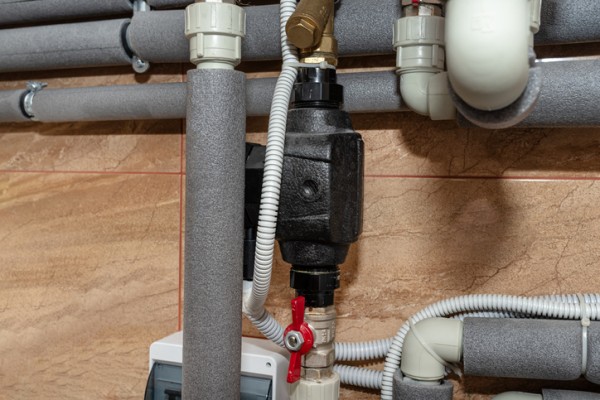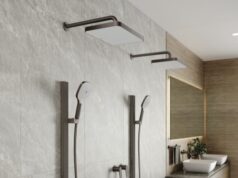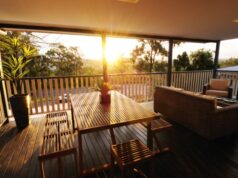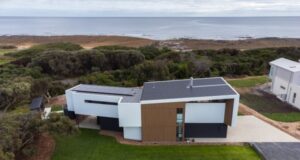
If you’re renovating your home—especially your bathroom, ensuite or kitchen—you’re probably already thinking about energy efficiency and water conservation. One option gaining popularity in Australian homes is the hot water recirculation system. These systems are designed to deliver hot water instantly, without wasting litres of water while you wait for the tap to warm up.
Here’s what you need to know if you’re considering installing one during your renovation.
What is a hot water recirculation system?
A hot water recirculation system keeps warm water circulating through your plumbing system so that it’s available on demand. This eliminates the typical delay between turning on the hot tap and actually getting hot water, particularly useful in larger homes or where bathrooms are located far from the hot water unit.
There are two common types:
- Dedicated return line systems: These are usually installed during construction or major renovations. A separate return pipe loops the cooled water back to the hot water system for reheating.
- Retrofit systems: Ideal for existing homes, these use the cold water line as a return path. A small pump and thermostatic valve are installed at the furthest fixture (like a bathroom), pushing the cooled water back to be reheated.
Both systems save water, but how they work—and their energy use—can vary.
Why install one during a renovation?
There are a few key reasons renovators choose to install a recirculation system:
- Less water waste: Many Australian households waste thousands of litres of water each year waiting for it to heat up. These systems help conserve water, particularly in multi-bathroom homes or double-storey builds.
- Convenience: You’ll get hot water as soon as you turn on the tap. No more standing around waiting in winter.
- Energy savings: While early versions used continuous circulation (which increased energy use), modern systems are far more efficient. They run on timers, sensors or manual switches, using power only when needed.
What do the regulations say?
If you’re installing or upgrading a hot water system, including recirculation, it’s important to ensure it meets current Australian regulations.
AS/NZS 3500.4:2025
The updated AS/NZS 3500.4:2025 standard for heated water services includes specific requirements for recirculation systems. These cover pump sizing, insulation, temperature control and system design. Plumbers across Australia must comply with this standard from 20 October 2025, although many are already applying it.
Temperature control
By law, stored hot water must be kept at 60°C or above to prevent the growth of legionella bacteria. However, for safety, hot water delivered to outlets must not exceed 50°C or 45°C in facilities like childcare centres, aged care or homes for people with disabilities.
This is usually managed using tempering valves, which mix cold water with hot water before it reaches your taps. Any recirculation system you install must work in harmony with these temperature controls.
WaterMark certification
All components, including recirculation valves and pumps, must be WaterMark-certified. This ensures they meet Australian plumbing standards, including durability and safety.
Pipe insulation
To prevent heat loss and boost system efficiency, hot water pipes used in recirculation loops must be insulated in accordance with AS/NZS 3500.4:2025. Insulation is especially important for long pipe runs or exposed pipework in roof spaces or under floors.
- Installation by a licensed plumber
Recirculation systems must be installed by a licensed plumber. They’ll ensure your system complies with both national and local plumbing regulations. In some states, like Tasmania, certain systems also require mandatory inspections and annual servicing.
Choosing the right system
The best system for your renovation will depend on your home’s layout, your water heater location, and how far the hot water needs to travel.
| System type | Best suited for | Notes |
| Retrofit (under-sink demand pump) | Existing homes | Easy to install, may briefly warm the cold line |
| Dedicated return line | New builds or major renovations | Most efficient, higher upfront cost |
| Timer-based pump system | Predictable hot water use | Good for set daily routines |
| On-demand recirculation | Energy-efficient homes | Activated by a button or sensor when needed |
No matter the system, make sure it includes the right tempering valve, has properly insulated pipework, and comes with the required certifications. And always have it installed by a licensed professional.
A renovation opportunity
Including a recirculation system as part of your renovation is easiest when walls and plumbing are already exposed. If you’re reworking your bathroom or adding an ensuite, this is the ideal time to consider it.
In the long run, you’ll enjoy the convenience of instant hot water, reduce your water bills and do your bit for sustainability—all while staying compliant with Australian standards.




